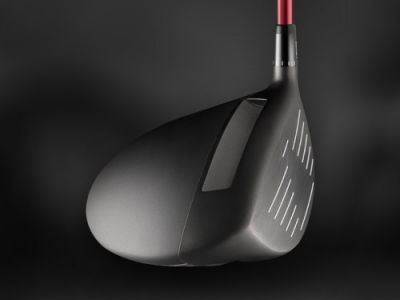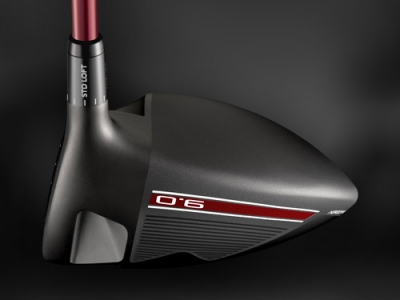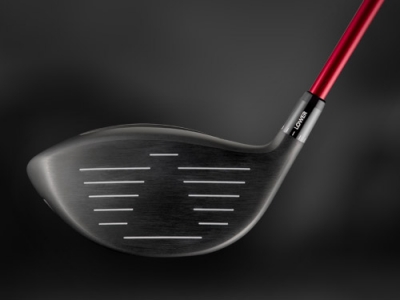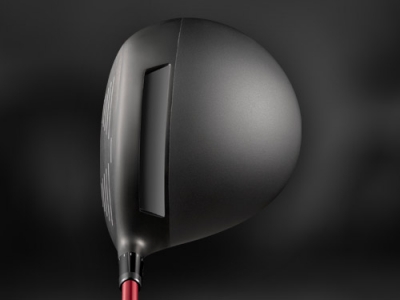By Jeffrey A. Rendall, Images courtesy of Adams Golf
PLANO, TX – Tolerances – the world is full of ‘em. We all know our limits, those lines we can’t cross if we’re to keep our lives on the straight and narrow path.
For golf drivers, the “line” is set by the USGA’s Characteristic Time test, which dictates that no driver face can exceed 257 units (see below for explanation).* As a result, golf club manufacturers instituted tolerances to ensure that they don’t go beyond the number when assembling drivers, or else face massive club recalls.
At Adams Golf, they’ve not only established a procedure whereby they test each driver to ensure its legality, they’ve honed the process to guarantee their XTD driver has the “hottest face in golf.”
“In the last 10 years, a couple major club makers have flown a little too close to the sun and they’ve had to pull those clubs from the stores,” remarked Michael Fox, Adams’ Director of Global Product Manufacturing.
 |
“We didn’t want to do that, but we also wanted to make sure all our driver faces were the hottest you can possibly buy, so that’s where we started in conceptualizing the XTD.”
According to Fox, the driver assembly progression is consistent for everyone. It’s a 20-30 step process whereby the head is cast, the face is added and it’s polished, painted and run through QBD (quality by design) testing.
The practice works to produce drivers in quantities large enough to sell and make a profit -- the challenge being that there’s a serious need for face-speed tolerances so the magic number of 257 is not exceeded.
“When assembling their drivers, manufacturers don’t target 257. You’ll need tolerances, which essentially means you’ll have some that are close to the number, and some considerably lower,” Fox said. “For example, if you target 235, some drivers will be plus ten and some will be minus 10 – based on manufacturing, based on testing…”
Most manufacturers use the same factory to build driver heads, so every company tends to target 235, plus or minus ten. The highest you’ll generally end up with is 245, which allows room in case you have a flier – it still will be considerably short of 257.
 |
Sound complicated?
Not for Adams. Fox says they’ve always tested every single driver for their Tour players, completely eliminating the possibility of having an “illegal” face get passed them. Consequently, everything Adams sends to the Tour tests between 245 and 250.
What about their everyday products? As an experiment, Adams tested all their market drivers, and they came out exactly as expected – between 225 and 245. They then went to Golfsmith and PGA Super Stores (near their headquarters in Plano, Texas) and tested everyone else’s drivers, too.
The results? You guessed it, between 225 and 245 for nearly all of them.
“But every once in a while you would discover a flier or two – you found everything from 215 to 257,” Fox elaborated. “So here’s the issue: when you go into the golf store, you don’t actually know which one you’re buying. You don’t know if you’re getting a driver that’s 215 or you’re getting one that’s 250.”
 |
Ever had a driver that you were sure was a dud? Now you may know why…
Fox says there isn’t much of a difference between 10 CT points, but there’s a pretty darn big difference between 40 or 50 CT points.
Adams decided the only way to solve the disparity problem was to completely blow up their manufacturing process. Whereas companies would typically only test 3% of their heads for face speed (confident that, as long as those 3% fall within the tolerances, keep on going), Adams would now test all of them.
Fox explains. “We now test every single driver for face speed, and we do it four times. When we cast a driver and weld the face on – we test the face speed. If it’s too slow, we polish it down and speed it up and send it on its way. We cast the rest of the pieces, we put the weights in, we finish the decaling – we test it again.”
“If it’s too slow, we send it back through the initial polishing process, speed it up and send it back on its way. We keep going. And we do that two more times, so at the end of the product lifecycle, when it’s all done, we test it one more time for face speed. If it’s too slow, we send it all the way back to the beginning of the process, until we get it right.”
 |
Talk about quality control. Whereas others still deal with tolerances of plus or minus ten, Adams’ tolerances are down to plus or minus one. Further, all XTD drivers are guaranteed to be between 247 and 249 on the CT scale.
Talk about hot. You know you’re getting a hot face with the XTD, and the company can proudly boast how it offers “the hottest face in golf.”
That’s great to hear, but now you have no more excuses on the golf course – no more telling your partners that it’s your driver’s fault for a short tee shot. Not only is the XTD “hot,” it also mandates accountability.
In addition to the hot face, the XTD also contains cut-thru slot technology – a slot is cut behind the face.
“The driver face works like a trampoline. The bigger the trampoline, the farther the ball goes,” Fox said. “The driver is a very big trampoline, whereas fairway woods and hybrids are a very small trampoline.”
 |
“The way the cut-thru slot technology works is, it’s like putting your trampoline on top of a spring. You get the compression from the actual trampoline fabric part, but now the whole trampoline is compressing -- and it’s storing all this extra energy. When you remove material from behind the face, you’re allowing that face to compress in.”
In essence, cut-thru slot technology creates much longer, faster golf clubs.
Finally, Adams designed the XTD for all levels of players. “XTD” means extra tolerance and extra distance – and because the driver offers the best materials the company can produce, it’s a driver for everybody.
The adjustable hosel allows you to open and shut the face as well as increase and decrease the loft.
“At Adams Golf, we focus on owning the line from top to bottom. We put a lot of focus on our fairway woods, hybrids and irons. We make one great driver a year, whereas the average is five or six drivers a year,” Fox added.
 |
“Our success isn’t based on the driver alone, so we can make just one awesome driver that we over-engineer and we’ve spent more money on than anybody else. Not only do we test all our driver faces, we also put the best components into it.”
A Matrix Red Tie shaft comes standard with the XTD, whereas it’s a custom upgrade nearly everywhere else. Adams also includes the IOmic grip on the XTD – once again, another “standard” feature on the model.
For our part, we loved the Adams XTD driver. Through its adjustable hosel, we were able to find just the right loft for a nice, boring trajectory.
It was extremely forgiving as well, with even badly off-center strikes still going straight and with reasonable distance. Hits in the center of the club took off with pleasing sound. Distance was comparable with all high-end drivers.
We can’t say that it was longer than the others – we don’t scientifically test products – but we definitely can recommend that you put it on your must-try list.
 |
With the slot behind the face, the XTD driver is somewhat non-traditional in looks, a factor to take into consideration for some.
But with the performance of the XTD as a whole, you may very well find a new level of “tolerance” of your own.
* The method of measuring the SPRING LIKE EFFECT in a clubface, recently developed by the USGA is to use a pendulum on the end of which is a metal hemisphere which bounces against the clubface and the contact time relates directly to the SLE.
The results of the conformance tests are used in determining conformity of the club head to the Rules of Golf, Using the pendulum testing apparatus, a golf clubhead is impacted several times by a small steel pendulum. A characteristic time between the clubhead and pendulum is recorded for each impact.
The characteristic time is directly related to the flexibility of the golf clubhead. The characteristic time of the clubhead shall not be greater than 239 µs. A maximum test tolerance of 18 µs is associated with this test. Therefore a maximum characteristic time of 257 us. or units, is allowed.
This test measures the response of a shafted golf club. If there is no shaft in the clubhead, one must be temporarily installed prior to testing. The normal procedure calls for the measurement to be made at the face center, and is meant to replace the old coefficient of restitution method.
From: golfclub-technology.com
Details:
Adams XTD Driver
Inquire at your higher-end golf retailers and club pro shops. Available in right and left hand (at 9 and 10.5 degrees, in 12 right-hand only).
Adams Golf now offers Yes! Putters in addition to a full range of metal woods, hybrids, irons and wedges.
Check out more information about Adams Golf products at: www.adamsgolf.com
| Related Links | Comments on this article? | |
|
Maryland National Golf Club Hollow Creek Golf Club Rocky Gap Resort PB Dye Golf Club in Ijamsville Whiskey Creek Golf Club |
E-mail Jeff Rendall, Editor: jrendall@golftheunitedstates.com |












